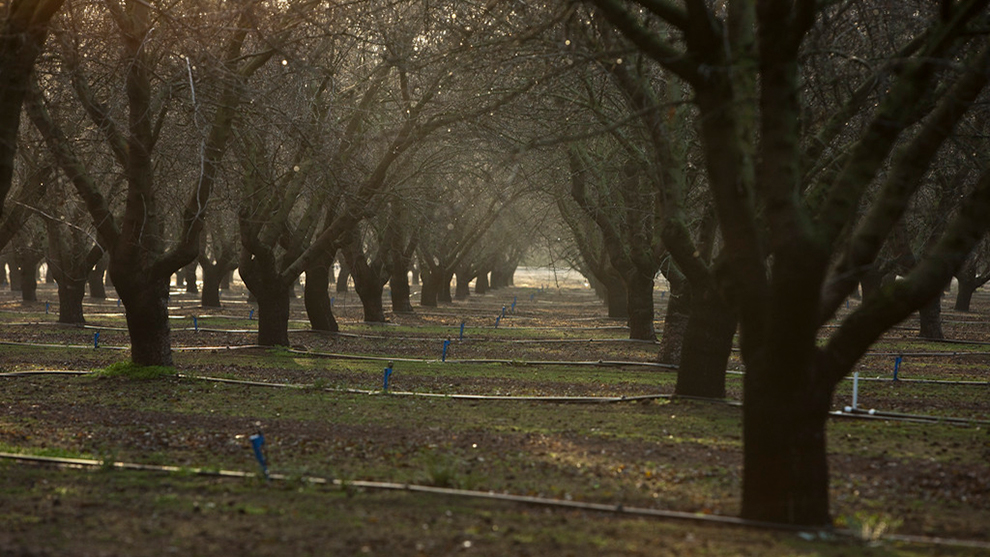While 2020 delivered a multitude of highs and lows – from a predicted record almond crop to the impacts of COVID-19 on families and facilities worldwide – one factor remained constant: almond trees continued to grow, and some were removed while others were planted. The industry, amidst challenges, continued its mission to produce almonds in better, safer and healthier ways to secure a strong future for the next generation. This effort in part requires a firm understanding of a variety of factors, including tree age, impacts of land use, crop location and acreage. Each of these elements plays into environmental impacts including water and air quality, disease and pest considerations and more. Further, accurate information on constantly evolving acreage and crop locations is critical for market and production applications.
In response to changing acreage and location of crops in California, in 2014 the Almond Board of California (ABC) commissioned Land IQ, a Sacramento-based agricultural and environmental scientific research and consulting firm, to develop a comprehensive, living map of California almonds, orchard by orchard. Beginning in 2019, the Almond Board adjusted the mapping process to include annual reporting that now involves the release of two acreage summaries: an initial estimate that includes a bearing acreage estimate, and a final estimate that includes bearing and non-bearing acreage estimates for the same production year.
The final estimate, which builds off the initial estimate earlier in the year, utilizes a combination of extensive ground truthing and advanced remote sensing analytics to refine Land IQ’s initial findings. The ground truthing effort maps a subset of the almond orchard population throughout the Central Valley as well as all other crops along a nearly 4,000-mile route. Land IQ then uses this data to calibrate algorithms in a remotely sensed image analysis process. This process differentiates almond orchards from other tree and annual crops. Both the remotely sensed and numerical estimates are combined for a total statewide acreage estimate. According to Land IQ, the 2020 estimate is 98.8% accurate.1
Based upon their 2020 final estimate, Land IQ determined there are 1,552,754 total standing acres (bearing and non-bearing) of almonds in California. Of this total, 1,242,203 acres are considered bearing (planted in 2017 or earlier) and the remaining 310,551 acres non-bearing (planted in 2018, 2019 and 2020).2 Non-bearing almonds cannot be consistently differentiated from other similarly aged tree crops using remotely sensed methods. The ground truthing data, proportionality of almonds to other tree crops and other lines of evidence are therefore used to numerically estimate acreage for orchards that are one and two years old.
“ABC has been working with Land IQ for several years to continually improve the process for analyzing the ebb and flow of orchard acreage as old orchards are removed and new orchards planted, resulting in very reliable estimates. Land IQ’s acreage estimations, combined with those of USDA’s National Agricultural Statistics Service, provide the industry with timely and useful information,” said Almond Board President and CEO Richard Waycott.
Industry members are encouraged to visit the Almond Board website at Almonds.com/Maps for more information on the 2020 final estimate and to view Land IQ’s updated layer map. Individuals referencing the 2020 layer on the Land IQ web map should note that the layer accounts only for bearing acreage. However, some non-bearing orchards that were visually confirmed from ground truthing may also appear on the map. Any technical questions about the map may be directed to Land IQ at (916) 265-6358 or technical.support@landiq.com.
1 Land IQ draws on multiple lines of evidence including agronomic and remote sensing knowledge, unique field boundaries, robust on-the-ground verification, publicly available imagery and other spatial and non-spatial resources.
2 Land IQ. California Statewide Almond Mapping – 2020. Nov. 2020. Based on data from USDA National Agricultural Imagery Program (NAIP) and USGS Landsat.


